At some point in their trading journey, the majority of traders have tried trading the FLAG formation but stopped after they learned other systems. When I first started to learn Elliott Wave Theory, I dropped simple trading patterns, but after a few months, I realized that I still trade the FLAG, I just called it a Zig-Zag correction. And that’s when I figured out that it’s one of the best patterns if you know how to use it the right way. Let me try to explain why I think so and my game plan for FLAGs.
Why I Love Trading Flags?
The FLAG, one of the most loved and hated patterns in the trading world, is also the one that made me the most profit in the last 12 years of my trading career! Like I mentioned above, after a while, I got that the FLAG is nothing more than a Zig-Zag formation from Elliott Wave. And when you connect that my trades for a long time were 5-3-5 setups, you get that over 35% of the trades I took in my trading career came from this pattern. The first rule of the trading is “Always Trade in the direction of the larger trend,” and FLAG is a continuation setup, so it’s not that hard to understand the reason why this easy formation can work magic for you. Let’s dive deeper into the formation so you can understand everything you need before you open your next trade.
Flag Chart Formation Rules
As mentioned above, the FLAG formation is a part of a continuation pattern, so the part where you should look for this formation should be a pullback. The FLAG formation is a simple three-leg pattern that develops against the more significant trend. To visualize this formation better, we will label the three legs as A-B-C, where legs A and C are going to move in the same direction, and leg B will represent the pullback.
For a FLAG to be a valid pattern, all we need is a three-leg structure where the first and third legs are similar in length, and before the formation, we should have a solid and clean trend move.
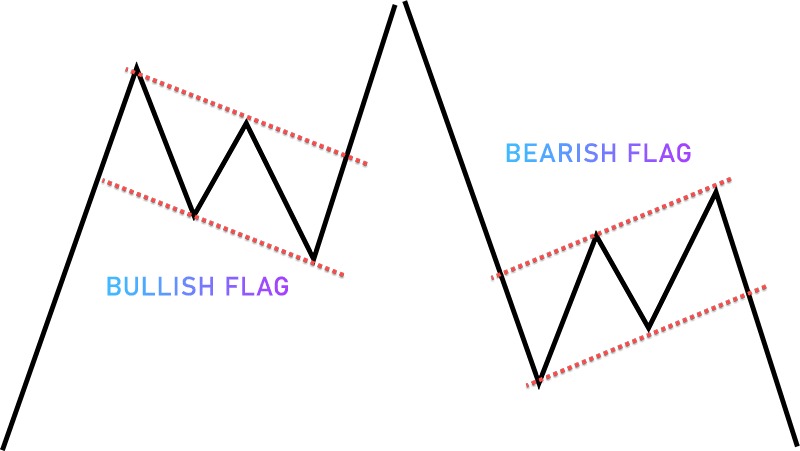
As you can see in the image above, the FLAG represents just a simple correction on a more significant trend. If you want to have clear rules, we can write three:
Rule #1 – 2nd Leg (B) must be shorter than the 1st (A)
Rule #2 – 3rd Leg (C) must be larger than 2nd Leg (B)
Rule #3 – 3rd Leg (C) should not exceed 161.8% of the 1st Leg (A)
Bullish FLAG EXAMPLE
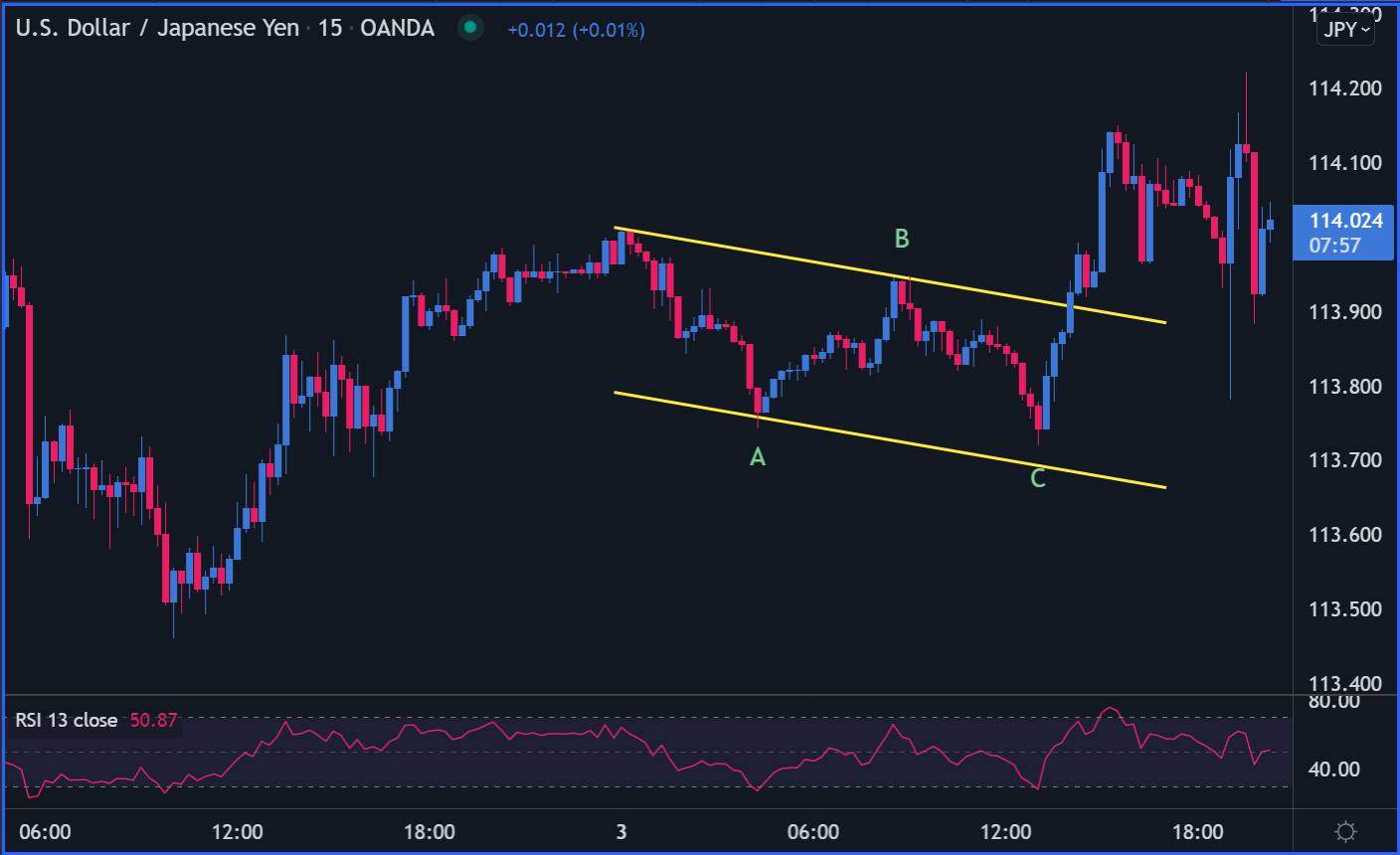
Bearish FLAG EXAMPLE
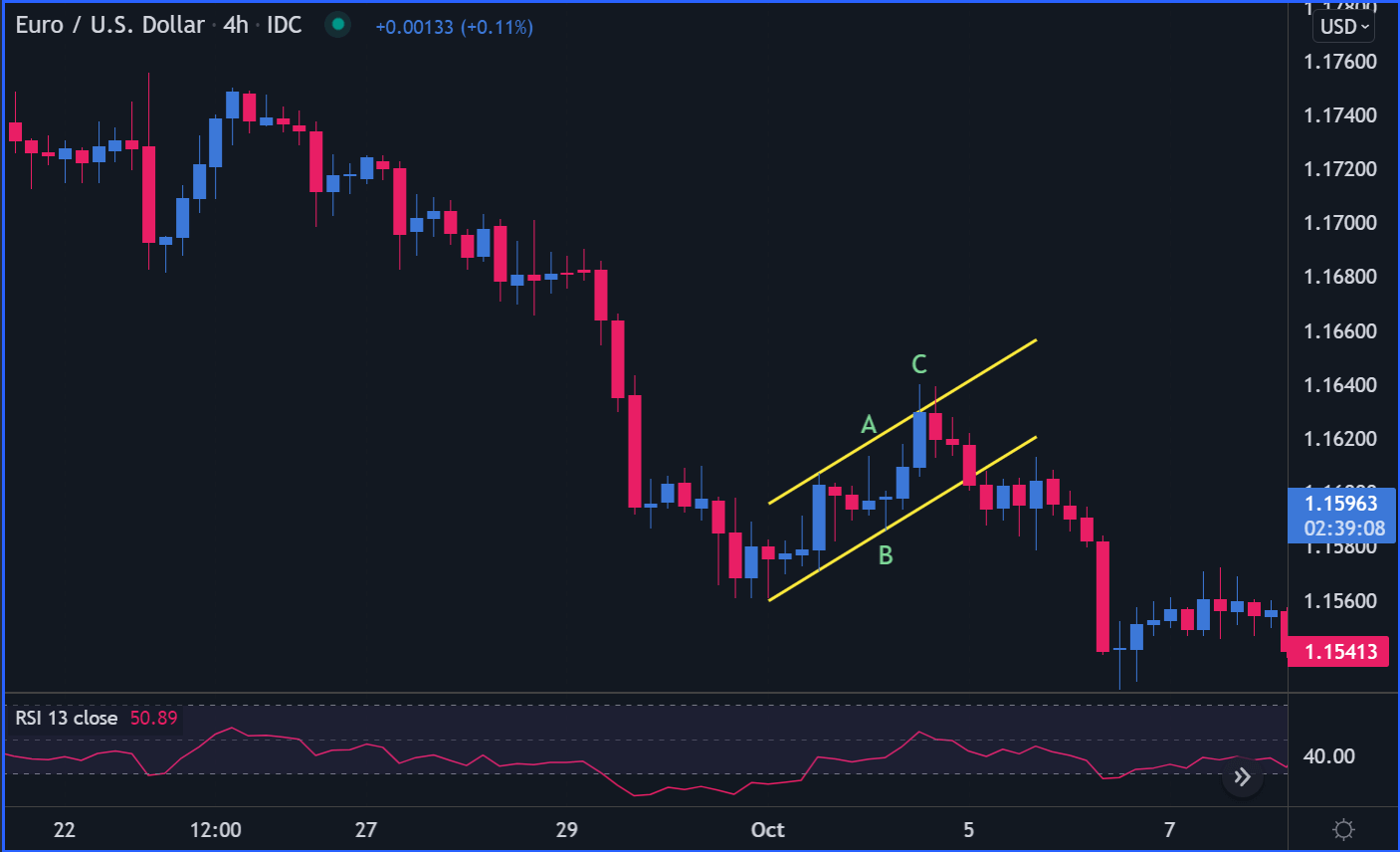
How To Confirm Flag Formation
Confirmation #1 – What Happened before Flag
The part the majority of traders get wrong is that they don’t check what happened before the FLAG! What people like to call the FLAG “Pole” is going to be the first confirmation to know if your formation has a chance to do something or not. Before the three-leg structure, I want to see a strong and sharp move a minimum double the size of the formation we want to trade. The easiest way to do this would be to draw the Fibonacci Retracement tool from the start through the end of the previous move and check if the FLAG is above 50% of the pullback. In my experience, the best FLAG formations ended around 23.6, 38..2 and 50%. You can allow 61.8%, but everything more than that is something I would skip.
Let’s check a few examples of this idea.
Great example of flag ending around 38.2%
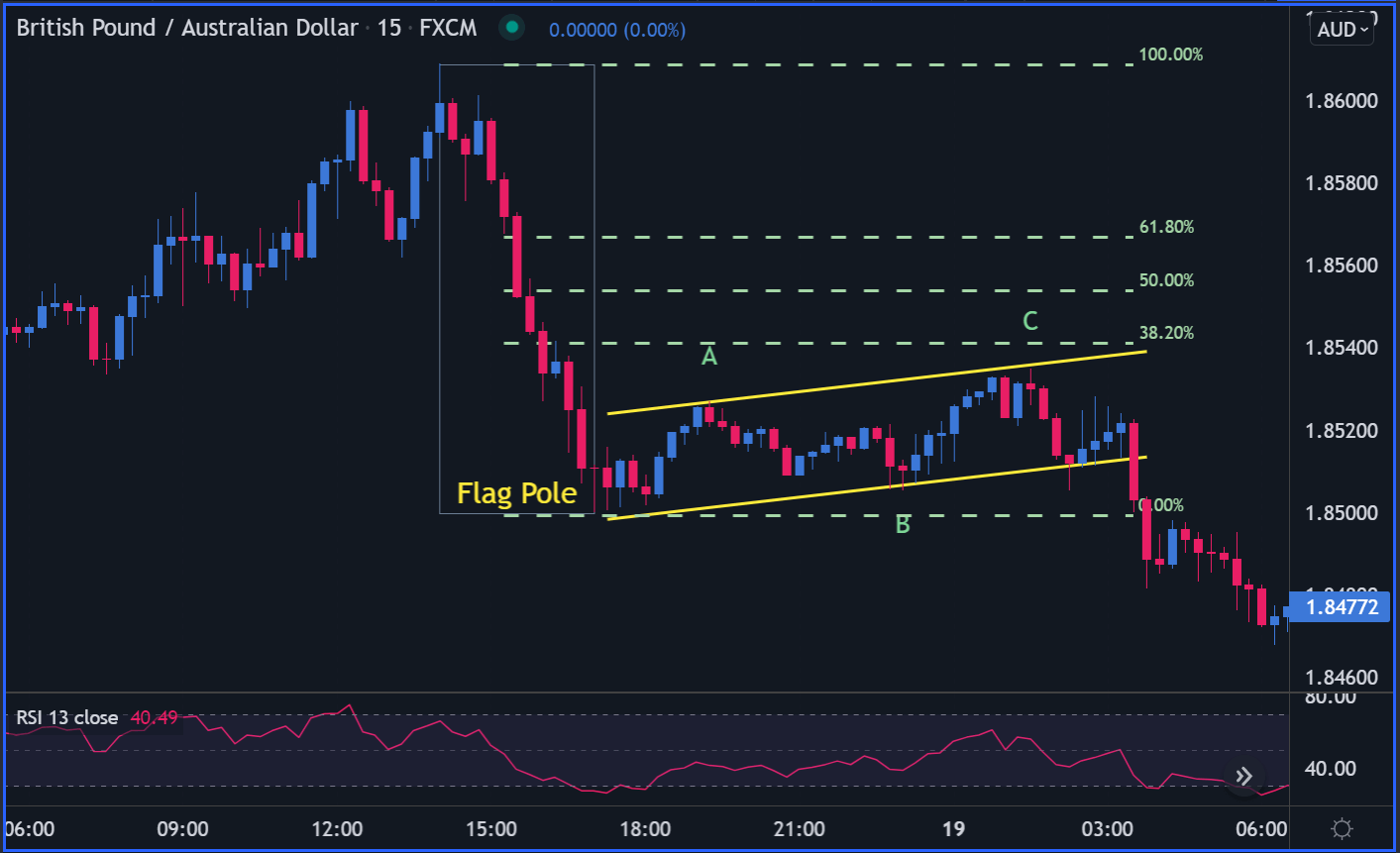
Deep Pullback Close To 90%, Not What we want to see
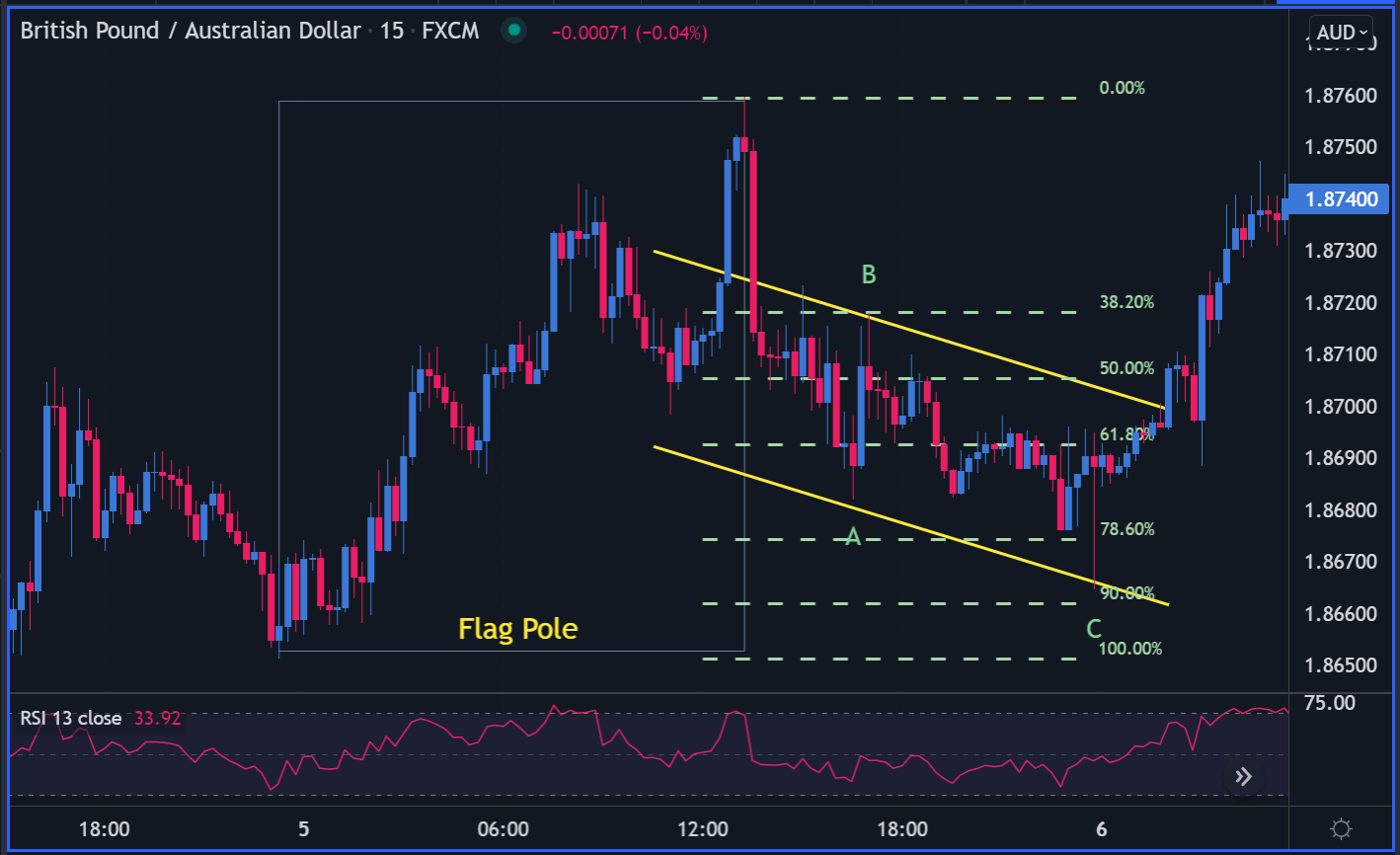
Confirmation #2 – RSI Flag Formation
This part is optional but highly recommended; the RSI should show a three-leg structure while price action develops it. RSI breakouts happen earlier than price action 98% of the time, so using that can be a great confirmation to tell you this pattern has a good chance to move the way you want.
Here is an example of what you want to see on the RSI when you spot a FLAG formation.
Example Of FLAG ON RSI INDICATOR
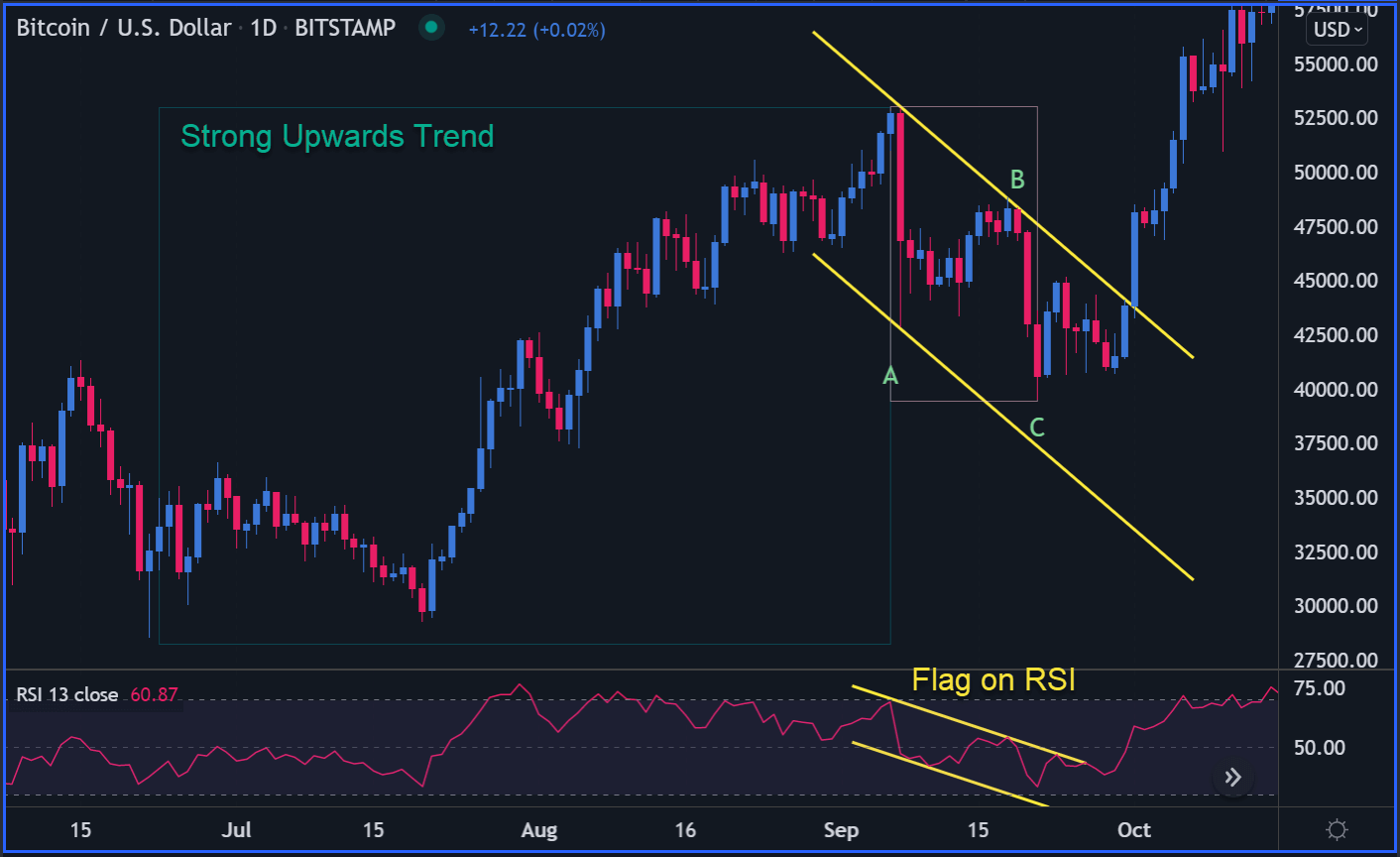
Example Of RSI BREAKOUT
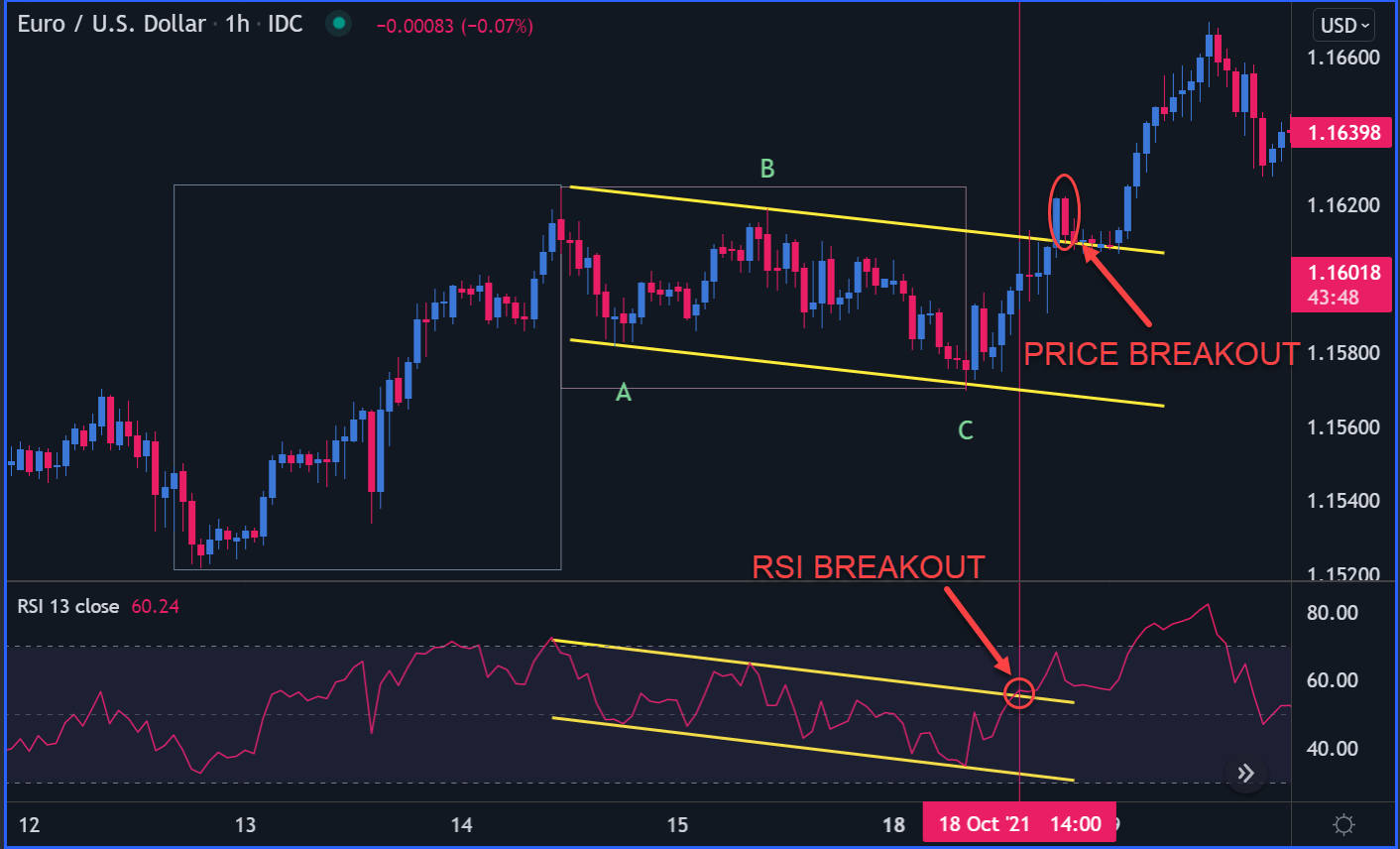
You can see how the EURUSD pair showed a breakout on the RSI a few candles prior to price action on the image above. That’s the reason I love to use this simple indicator as my confirmation.
Easy Game Plan For Trading Flags
Trading a FLAG formation should be a pretty easy job. We know they are continuation formations, so aiming to trade in the direction of the more significant trend is the best idea. Think about how deep a pullback is from the pull and aim for trading 38.2-50% plays only where we have equal legs between C and A leg (max allowed 127.2% ext).
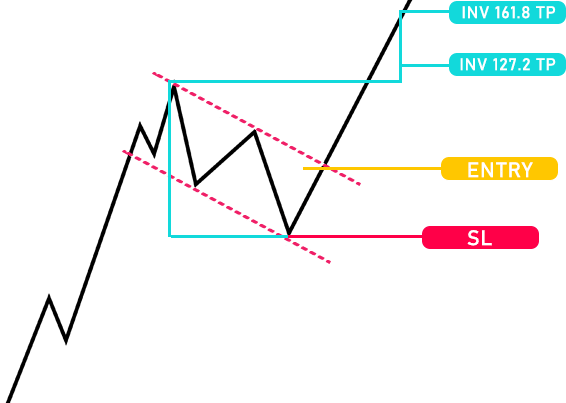
Entry: FLAG Breakout (drawing a trend line from the start of Leg A thorough end of B Leg
Stop: End of C Leg ( on smaller TFs add few pips for spread)
Targets: We can use inverse 127.2% and 161.8% of the entire FLAG as our targets (use the fibo tool)
Minimum Risk: Reward: FLAGs can offer a bad Risk Reward in general, especially if the pullback in the second B Leg is deep, so try going with a minimum of 1:1.5 (ideally 1:2) if you want to make it profitable.
Best Asset Group: In my experience, this simple approach works great on all instruments, so that you can trade it in FX as well as in Crypto, Commodities, and the Stock Market.
Best Time Frames: My personal favorite time frame for patterns in FX is M15, but you can squeeze the same thing in H1, H4, D1. Trading a smaller time frame like M5 or M1 can work, but before you try it, make sure you have a minimum of 100 trades on M15 (this is more to make sure you get it correct).
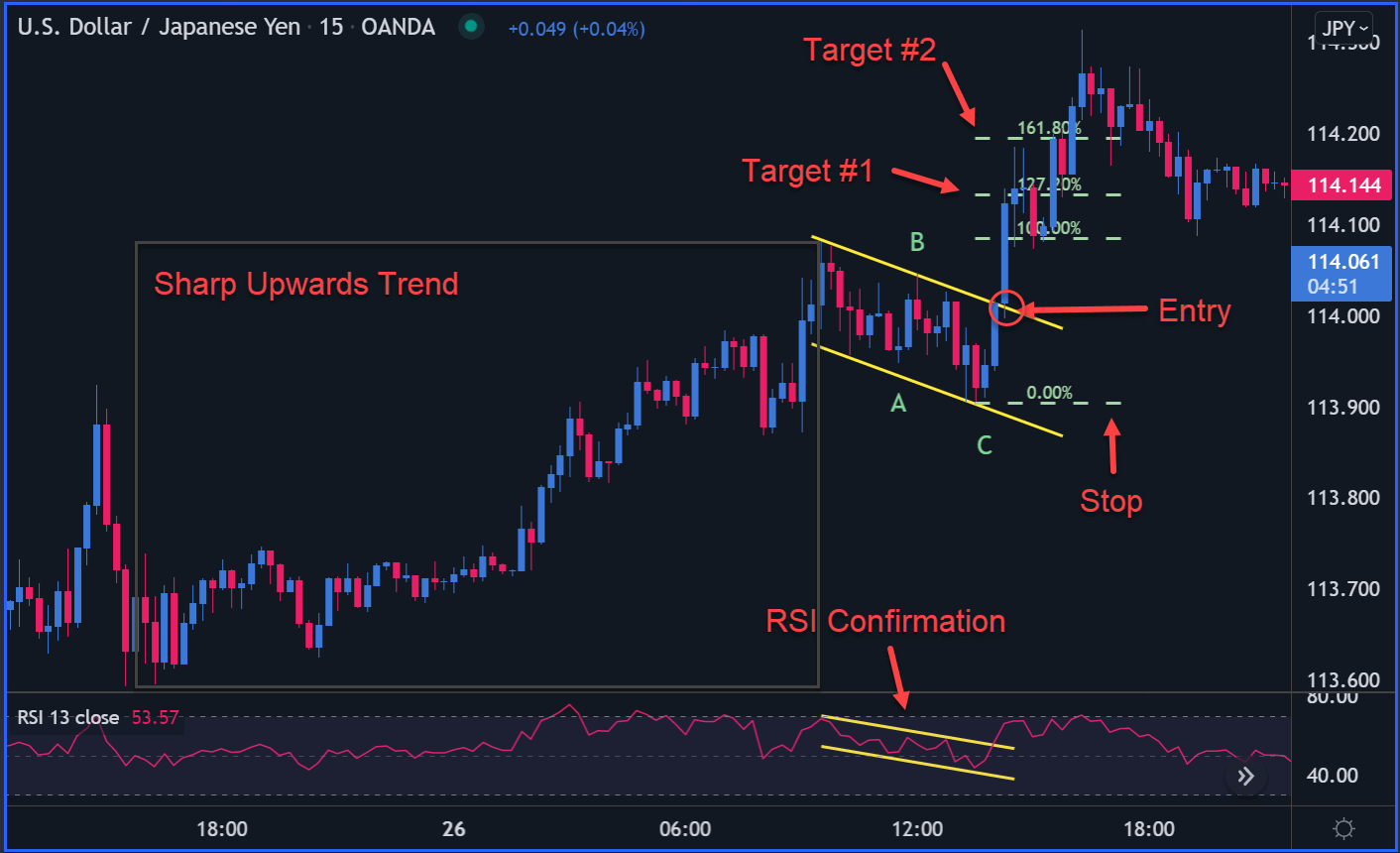
Conclusion
You have seen in this simple post that finding FLAG formations is probably the easiest thing you can master. Yes, maybe you can try practicing over the weekend. The goal is to train your eyes to spot the formation. After that, feel free to try it if all the rules are aligned.
Because too many traders will say it’s too easy, try sticking to my approach for a minimum of two months. After that, feel free to add new rules for extra confirmation. I don’t think you need anything more than the RSI, but every strategy can be improved. So can this, so go and try it!
If you are looking to learn more about chart formations, feel free to watch my video on that subject.
Let me know how your FLAG trading changed in a few days. Come back here and post it below inside the comment section.
Enjoy your trading,
Nicola





Thank you very much Nikola for these explanations!
I’m glad you liked the article, enjoy your day Georgi.
Hi Nicola,
This pattern design is really powerful. I love it. You showed every step we need to cash on our trading. We will appreciate getting some posts like these.
Thanks NDri, will make more educational posts soon.